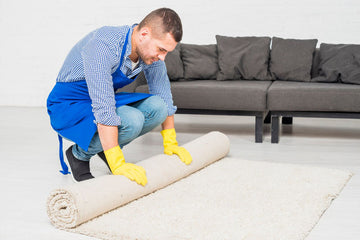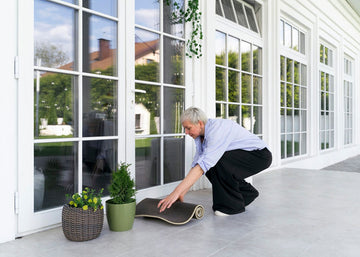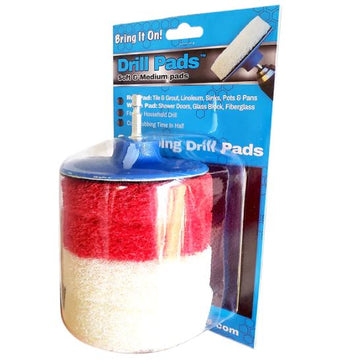Every homeowner cherishes the plush feeling of a carpet underfoot, but understanding the intricacies of its maintenance, particularly carpet drying time is paramount. The duration carpets remain wet can vary, largely influenced by numerous determinants that are essential to comprehend.
How Carpets Absorb Water: A Closer Look
Carpets, by their very structure, are akin to sponges. Depending on the type of carpet fibers – be it wool, polyester, or nylon – the degree of water absorption while cleaning carpet varies. Water molecules penetrate these fibers, often settling deep within, making the drying process challenging.
The Potential Risks of Prolonged Wetness
Leaving a carpet wet might seem benign, but it's a precarious misstep. The longer carpets retain moisture, the higher the chance for mold and bacteria proliferation. These microorganisms don't just compromise the integrity of the carpet but also pose serious health risks.

Factors Determining Carpet Drying Time
Often, the common question arises: How long does it take the carpet to dry? The drying time of carpet depends on and is influenced by several reasons. Various factors affect the carpet drying process. Some of them are as follows:
- Material of the Carpet
- Wool vs. Nylon vs. Polyester: A Comparative Analysis
- Thickness and Pile Height
- Underpadding and Its Role in Drying
- Environmental Factors
Material of the Carpet
The foundational fabric of a carpet plays a pivotal role in its drying time. Wool, for instance, retains water more than its counterparts due to its dense nature.
Wool vs. Nylon vs. Polyester: A Comparative Analysis
Wool, hailed for its luxury, retains moisture extensively but dries efficiently when facilitated properly. Nylon, synthetic yet resilient, has moderate water retention. Polyester, however, is quick to dry but may retain a deceptive under-layer of moisture.
Thickness and Pile Height
A carpet's thickness and its pile height are directly proportional to drying time. Thicker carpets, with their increased depth of fibers, tend to retain more water.
Underpadding and Its Role in Drying
The oft-overlooked underpadding acts as a secondary sponge. While it offers comfort, it can be a hidden moisture reservoir post-water damage or cleaning.
Environmental Factors
These factors also play an important role in the carpet drying process.
- Humidity's Impact on Drying
- Room Temperature and Airflow
Humidity's Impact on Drying
High humidity levels can drastically extend carpet drying time. In such an environment, the air is saturated with moisture, reducing its capacity to absorb additional water from other surfaces like carpets.
Room Temperature and Airflow
Warm rooms accelerate the drying process by enhancing evaporation rates. Simultaneously, consistent airflow ensures that this evaporated moisture doesn't settle back into the carpet.

Methods of Cleaning and Their Impact
There are a number of methods that are used for carpet cleaning. Some of them are as follows:
- Hot Water Extraction Drying Times
- Dry Cleaning and Its Drying Efficiency
- Bonnet Cleaning: Quick Dry or Not?
- DIY vs. Professional Cleaning: Which Dries Faster?
Hot Water Extraction Drying Times
Also termed steam cleaning, this method deeply cleanses carpets but leaves them extensively wet. Drying, thus, can be protracted without proper air circulation.
Dry Cleaning and Its Drying Efficiency
Dry cleaning carpets employs minimal moisture, ensuring carpets remain only slightly damp post-cleaning. It's an optimal choice when rapid drying is paramount.
Bonnet Cleaning: Quick Dry or Not?
Bonnet cleaning, a surface-level method, uses limited water. Consequently, drying times are significantly truncated.
DIY vs. Professional Cleaning: Which Dries Faster?
DIY methods often lead to excessive water use, extending drying times. Professional carpet cleaners, wielding specialized equipment, optimize water usage, ensuring faster drying.
Boosting the Drying Process
Implementing the following strategies can help boost the drying process.
- Effective Use of Fans and Dehumidifiers
- The Role of Open Windows and Ventilation
- Strategic Furniture Placement During Drying
Effective Use of Fans and Dehumidifiers
Floor fans and dehumidifiers are quintessential in expediting the drying process. While fans enhance air circulation, dehumidifiers maintain optimal humidity levels.
The Role of Open Windows and Ventilation
Natural air circulation can be an unsung hero in the drying process. Open windows allow dry air to permeate the room, aiding in moisture evaporation.
Strategic Furniture Placement During Drying
Furniture can impede airflow. By strategically placing them, you ensure unrestricted air movement, catalyzing drying.
Signs Your Carpet Is Dry
How do you know your carpet is dry now? Let's learn the trick.
- The Touch Test: Reliable or Not?
- Measuring Moisture: Tools and Techniques
- The Role of Smell in Determining Dryness

The Touch Test: Reliable or Not?
Relying solely on touch can be misleading. Surface dryness might conceal underlying dampness, necessitating more reliable moisture measurement tools.
Measuring Moisture: Tools and Techniques
Hygrometers or moisture meters offer an empirical insight into a carpet's dryness, ensuring no residual moisture lingers.
The Role of Smell in Determining Dryness
A lingering musty odor is indicative of retained moisture and potential mold growth. A fresh-smelling carpet is often a dry one.
Risks of a Damp Carpet
Dust, dirt, and other factors can make your carpet rough and damp.
- Mold and Mildew: Silent Threats
- Compromised Carpet Structure and Longevity
- Health Hazards of Prolonged Wetness
Mold and Mildew: Silent Threats
These silent threats thrive in damp environments. Once they colonize, the carpet's lifespan is compromised, and they also become health hazards, releasing spores and causing odors.
Compromised Carpet Structure and Longevity
Constant dampness weakens carpet fibers, reducing its lifespan and leading to a lackluster appearance.
Health Hazards of Prolonged Wetness
Beyond mold, damp carpets can become breeding grounds for bacteria, mites, and other pathogens – a dangerous cocktail for health.
Tips for Faster Drying
These help in getting your carpet dry faster than ever.
- Pre-cleaning Preparations to Reduce Water Use
- The Benefits of Periodic, Light Cleaning
- Vacuuming: More Than Just for Dirt
Pre-cleaning Preparations to Reduce Water Use
Vacuuming ensures that dirt, debris, and stains don't mandate excessive water use during cleaning.
The Benefits of Periodic, Light Cleaning
Frequent, light cleaning ensures dirt doesn't accumulate, negating the need for extensive water-intensive cleaning methods.
Vacuuming: More Than Just for Dirt
Beyond dirt extraction, vacuuming also extracts residual moisture, ensuring carpets are left damp and not soggy.
Caring for Your Carpet Post-Cleaning
After cleaning and drying, it's important to take care of your carpet for long-lasting use. Some of the necessary caring tricks are as follows:
Post-cleaning Treatments to Enhance Dryness
Utilizing carpet cleaners that leave minimal residue and using treatments that prevent rapid re-soiling ensures prolonged dryness.
Maintaining the Fluffiness and Pile Integrity
Brushing out carpet fibers using a drill brush post-cleaning ensures they remain fluffy and stand tall, retaining their original splendor.
Best Practices for the First 24 Hours After Cleaning
Avoid heavy foot traffic, ensure consistent airflow, and frequently check for any signs of dampness or odors.
Conclusion
In essence, comprehending carpet drying times isn't just about aesthetics but is pivotal for carpet longevity and health. With these insights, homeowners can ensure their carpets look pristine and remain in top-notch condition for years.




